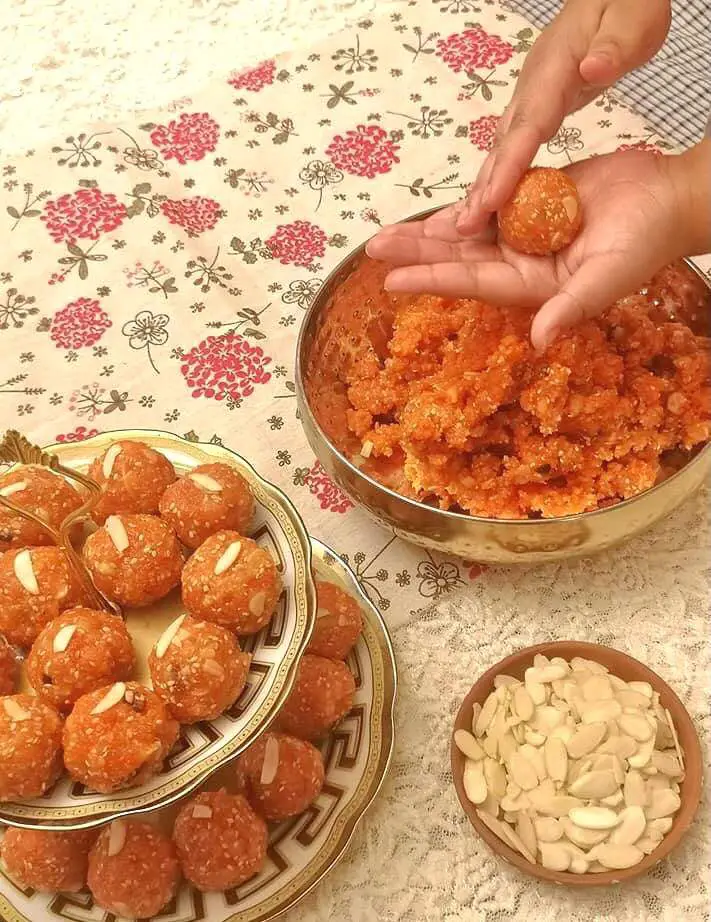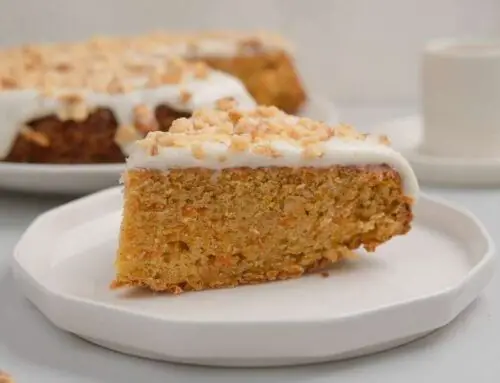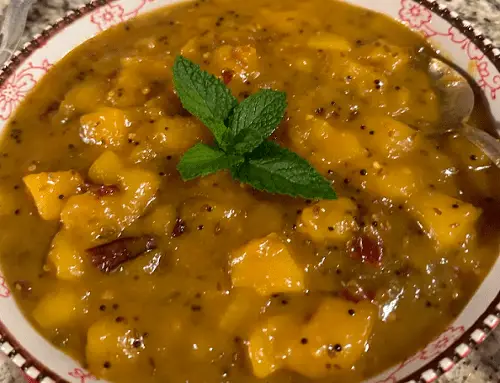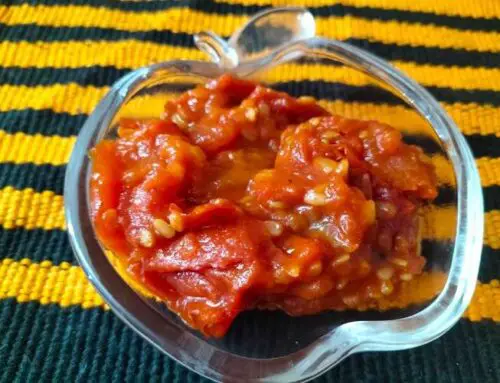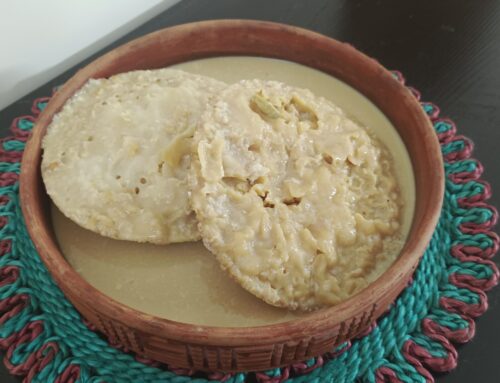Mihidana, also known as Bundia Laddu, is a jewel in the crown of Bengali cuisine. This exquisite dessert resonates with both tradition and taste, presenting a harmonious fusion of culinary artistry. Made from chickpea flour, it’s meticulously crafted into tiny pearls of sweetness that evoke a myriad of emotions.
A true masterpiece, Mihidana has a history as rich and diverse as the land it hails from. Its roots can be traced back to ancient Bengal, where skilled confectioners mastered the art of transforming humble chickpea flour into a culinary marvel. This dessert has been an integral part of Bengali culture for generations, gracing celebrations, festivals, and special occasions with its enchanting presence.
The preparation of Mihidana is an art that demands precision and expertise. Chickpea flour is carefully blended with water to form a batter that is then gently poured through a sieve into hot ghee. As the batter droplets fall into the ghee, they transform into delicate pearls of sweetness. These pearls are then skillfully collected and coated with a sugar syrup, enhancing their flavor and sweetness. The result is a dessert that embodies not just taste but also the dedication of the artisans who have perfected the craft over centuries.
Mihidana’s significance goes beyond its taste and intricate preparation. It’s a dessert that holds a special place in Bengali celebrations. Be it weddings, festivals like Durga Puja, or joyous family gatherings, Mihidana is cherished and shared with loved ones. Its presence on the table signifies the essence of togetherness, reflecting the spirit of unity that Bengali culture holds dear.
As one of the most special Bengali dishes, Mihidana represents a connection to one’s roots and heritage. It’s a culinary treasure that encapsulates the flavors of Bengal and the love that is poured into its creation. Passed down through generations, this dessert is a testament to the enduring power of tradition in shaping culinary preferences and creating lasting memories.
The occasions when Mihidana graces the table are moments of celebration and joy. The dessert’s golden hue and delicate texture evoke a sense of anticipation, a promise of something truly extraordinary. With every bite, one is transported to a world where flavors meld seamlessly with memories, creating an experience that is as timeless as it is delicious.
In a world that is rapidly changing, Mihidana remains a steadfast symbol of Bengali heritage. Its preparation continues to be a labor of love, a reminder of the craftsmanship and dedication that have been passed down through generations. As we savor each pearl of Mihidana, we honor the past while embracing the present, keeping the flame of tradition alive in our hearts and on our taste buds.
In conclusion, Mihidana, or Bundia Laddu, isn’t just a dessert; it’s an embodiment of the soul of Bengali cuisine. Its history, intricate preparation, and significance in celebrations make it an exceptional delicacy that resonates with both the senses and the heart. With each bite, Mihidana weaves a story of tradition, togetherness, and the enduring love for flavors that define Bengali culture.
Mihidana/Bundia Laddu
“I love cooking and it relaxes me. It took me a while to learn things. Find a good cookbook. There is nothing wrong with using recipes, and it gives confidence when you make something good. It can take years to get good at many different foods. I’m contemplating a career involving cooking because it brings me so much pleasure…”
Ingredients
- 2 cups chickpea flour besan
- 1/2 tsp baking powder
- food colour orange
- sugar as per taste
- cooking oil for frying
Instructions
- Mix the chickpea flour with slightly more than ½ teaspoon of baking powder thoroughly.
- Add 1½ cups of water to the mixture and whisk it well until smooth.
- Divide the mixture into two parts and mix your preferred food colour in one part. (I have divided it into two parts - one natural colour and the other orange colour.)
- To check if the batter is the right consistency for making boondi, drop a small amount of batter into a bowl of cold water. If it floats and doesn't dissolve immediately, the batter is ready for making boondi. If it dissolves quickly, you need to add a little more water to the batter.
- Heat oil in a deep frying pan.
- Hold a perforated spoon (boondi ladle) over the hot oil and pour batter over it. The batter should drop into the hot oil and form small round droplets.
- Fry the boondis until they are golden brown and crispy. Remove them from the oil and drain excess oil using a kitchen paper towel.
- Prepare sugar syrup by boiling 1½ cups of sugar and 1 cup of water together until it reaches a one-string consistency. (The syrup should not be too thick or too thin.)
- Add the fried boondis into the sugar syrup and mix well.
- Allow the boondis to soak in the sugar syrup for a few minutes.
- Shape the boondis into laddus while they are still warm.
- For laddus, you can add ready-made boondis, roasted sesame seeds (½ cup), chopped mixed nuts (1 cup), a pinch of rose water, and 2-3 tablespoons of leftover sugar syrup. Mix them well and shape them into laddus.
- Enjoy the delicious Mihidana or Boondi Ladoos!
Nutrition

